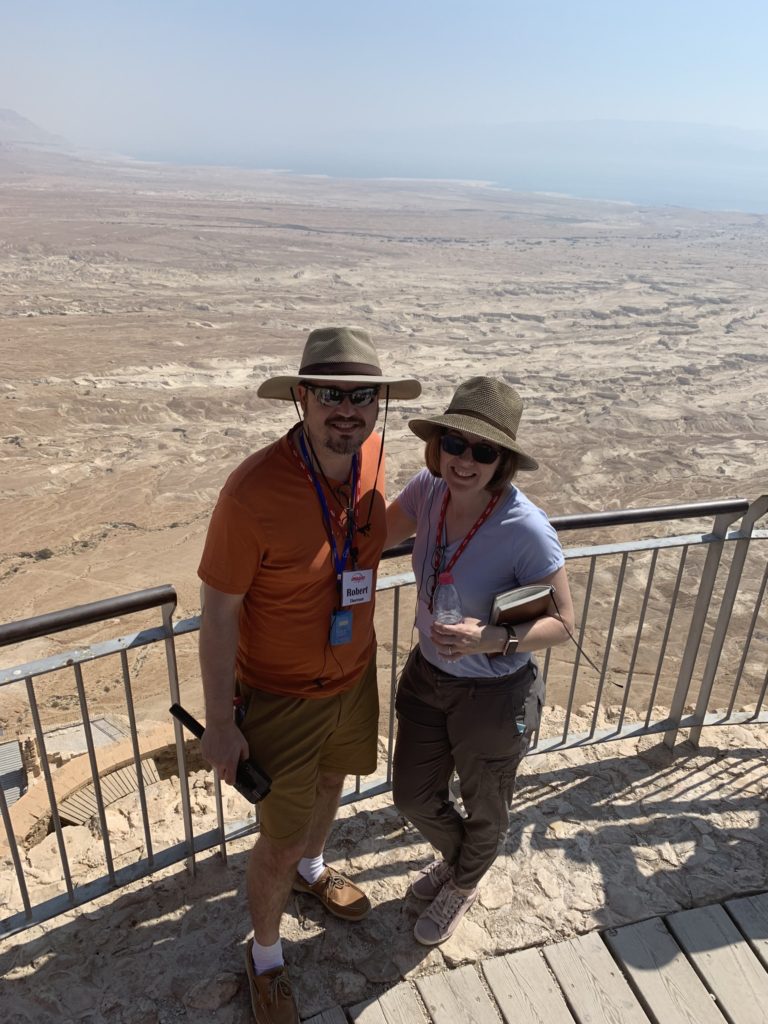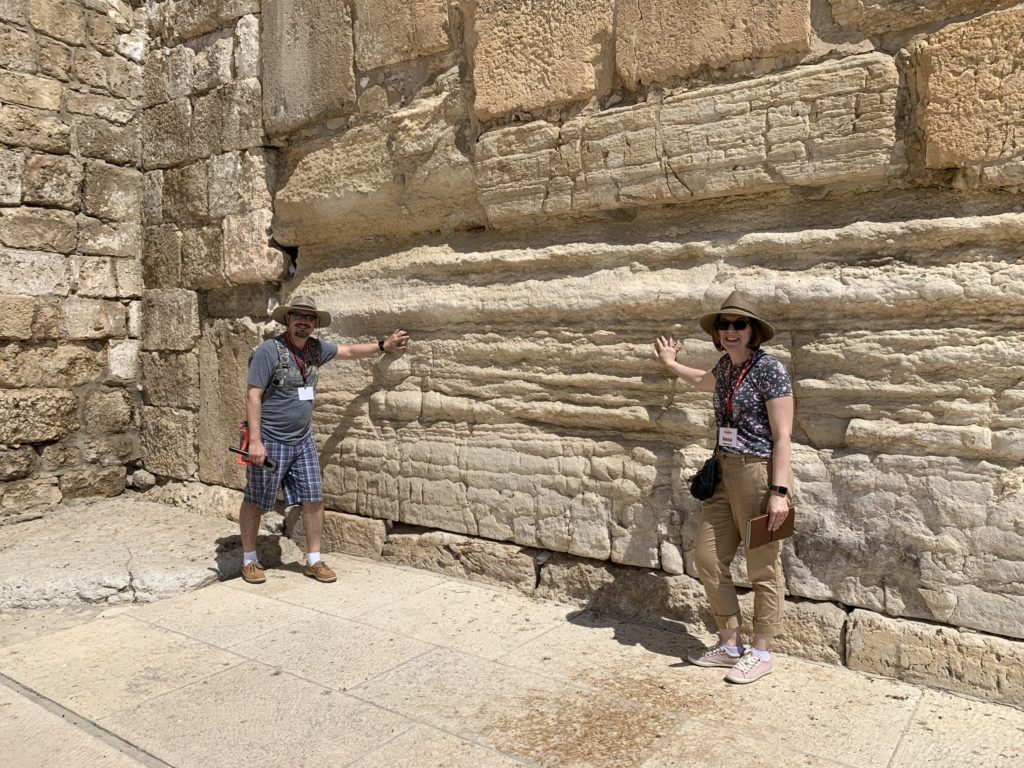“As Jesus was leaving the Temple, on of His disciples said to Him, “Look, Teacher, what massive stones! What magnificent buildings!”” (Mark 13:1 NIV)
This exclamation from a random disciple feels a little out of place in our scriptural journey, unless you’ve been to Jerusalem and seen what is left of the Temple Mount. If you are lucky enough to have a tour guide, they’ll explain in tremendous detail the still-receding scope and force of Herod the Great’s reign in Israel. His architectural prowess is obvious two thousand years later.
In our journey to the Holy Land, we first visited Caesarea Maritime: an ancient manmade seaport, not quite washed away by typhoons and time. Herod the Great’s coastal city featured giant sacks of volcanic ash solidified upon submersion; creating great pylons to support an entire community.

We also made our way to Masada; a strange flat-topped rock in the Negev. Scorching temperatures and one or two annual rainfalls make the terrain uninhabitable. Expect for Herod: he devised a run-off system that captured and retained every drop of water into a series of cisterns. One cloudburst a year could sustain the entire fortress, which was carved out of the top of the towering plateau. This high desert hideout became a neurotic kings’ impenetrable foxhole. It would take three full years for the Romans to breach an occupied and defended Masada.

We arrived in Jerusalem to find a shaved-off mountain – the top appears to be cut flat like a military haircut. Our guide informed us that Herod had it moved, hauled off so he could build a summer palace where he could see his enemies for miles in every direction.
And lastly, we arrived at the Temple Mount. We quickly learn that this majestic structure is not Solomon’s Temple or even the resurrected Temple from Nehemiah’s time. No, Herod the Great had his way here, too. He funded the full renovation of the Second Temple because he was Jewish by blood but not by practice. This created tension between him and his constituants, the Israelites. He funded and directed the lavish reconstruction of the ancient Temple in an attempt to connect with his people.

Of course, Herod’s Temple was destroyed in 70 AD as Jesus eluded to in the very next verse, but the stones of the Temple Mount are still standing. We walked through the wall museum and took the inner wall tour. What remains is still impressive. Our guide could not fully explain how they cut or slide some of these stones into place. Archeologists have unearthed pulley systems and harnesses and even ancient lifts, but the largest stones (weighing 160,000 pounds and over a hundred feet tall) still stump the guides and historians alike.
Realize that this original height and majesty is what caught our disciples attention. Herod wasn’t ‘great’ for his warm personality or international diplomacy. He wasn’t a a great guy or even a terribly effective leader. He was a ‘great’ builder: a visionary with tremendous problem-solving skills, an architect that left his mark on the world for millennia to come.
We note Jesus response to all this worldly ‘greatness’ on display before them.
‘Do you see all these great buildings?” replied Jesus. “Not one stone will be left on another, every one will be thrown down.” (Mark 13:2 NIV)
Jesus spoke plainly about the destruction of the Temple. Such a statement was offensive to both the Roman occupation (who built it) and the Jewish leadership (who revered it).
Jesus reminds us that our earthly accomplishments are less than a generation from being rubbish. Herod, in all his greatness, could not keep his world work intact. Neither can we. This life and all it’s entrappings are temporary.
“What is essential is invisible to the eye.” (Antoine de Saint Exupery)
Today I am considering my to-do list. How many times on my agenda will need attending to again tomorrow, or in another week? How many of today’s tasks will not matter in ten years? Herod tried to buy his way into the affection of God’s people, and maybe even with God Himself. Maybe he thought if he worked hard enough, built big enough, planned thoroughly enough, he could outrun his demons and gain heavenly citizenship.
That’s not how it works. The Old Testament reminds us, our righteousness is as filthy rags. There’s not a point system and renovating a Temple doesn’t bring us any closer to right relationship with God.
“All of us have become like one who is unclean and all our righteous acts are like dirty rags, we shrivel up like a leaf and like the wind of our sins sweep us away.” (Isaiah 64:6 NIV)
Only repentance puts us in the position to receive Christ’s righteousness. Recognition of sin, humility in His presence, response to His word; these are the things that move us forward in heavenly relationship.
“Love the Lord your God with all your heart and with all your soul and with all your mind and with all your strength.’ The second is this” ‘Love your neighbor as yourself.’ There is no commandment greater than these.”
(Mark 12:30-31 NIV)
Lord, forgive us. We are builders by nature: always attempting to assemble something that will outlast our short story. The problem is, we build in the wrong realm. We erect houses and careers and financial records. We forget that what is most essential is unseen, relationships are the primary function of the human condition. First with You, then with others. It’s hard to put the bulk of our effort in things we can’t see, in places we cannot access for measuring, but we read Your word and know that loving You and loving others is the sum total of Your commandments. These are the most important tasks we can put our hands to. Help us keep the main thing the main thing. We want to serve Your Kingdom well in ways that matter eternally. Amen.